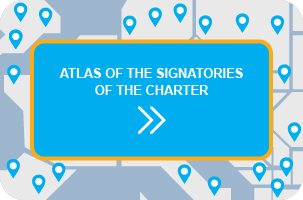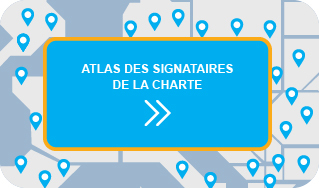Methods
Gender Mainstreaming
- What is Gender Mainstreaming?
This is a strategy which consists in integrating a gender perspective in all areas, all spheres and at all levels in order to achieve gender equality. This method is based on the idea that it is not enough simply to «add in» a gender component late in a given project’s development. All programs, policies and budgets must consider their impact on women and men from the beginning to the evaluation.
- How to integrate gender mainstreaming to my local/regional authority?
Examples of actions:
- Train staff regularly on gender equality
- Make sure that the different parts of the authority understand their role, and that gender equality objectives and actions are built into their existing plans
- Take into account gender equality in relation to the public procurement process (e.g. service specifications for contracts)
- Undertake an assessment of the potential impact on women and men at an early stage for any significant new or amended policies and procedures, major projects or allocation of resources
- Analyse budgets by gender, at least for each key priority, as part of each annual budget cycle
- Collect information, in relation to the key priorities, broken down by gender (e.g. who uses services, who responds to consultation, who is employed and in what jobs etc.)
Gender Budgeting
- What is Gender Budgeting?
To apply the Council of Europe’s accepted definition of the term: Gender Budgeting is an application of gender mainstreaming in the budgetary process. It means a gender-based assessment of budgets, incorporating a gender perspective at all levels of the budgetary process and restructuring revenues and expenditures in order to promote gender equality.
It is an essential step to verify if the aims of your local/regional authority in achieving gender equality have been translated into budget decisions.
In other words, this method consists in:
- analysing how public resources are used in terms of gender equality by focusing on resource distribution
- evaluating the impact of unequal distribution of public funds on women and men
- restructuring the budget by identifying how resources have to be redirected to reach a fairer distribution of resources.
- How to proceed?
To analyse how public resources are divided between women and men and verify if they meet women and men’s needs, there are two complementary approaches:
- Identify specific budgets for planned projects in the field of gender equality
- Review existing budgets from a gender perspective and those budgets that might have an impact on gender equality
Gender Statistics
- What is Gender statistics?
Gender statistics provide information on gender (in)equality in all spheres of society. It cuts across traditional fields of statistics to identify, produce and disseminate statistics that reflect the realities of the lives of women and men, and policy issues relating to gender.
- Why should I consider this method to achieve gender equality?
Gender statistics are needed to:
- Raise public awareness on the real conditions of life of both women and men
- Provide an efficient source of information to evaluate the impact of government’s policies on the lives of women and men.
- Provide policy makers with sufficient baseline information to implement favourable changes to existing policies affecting women and men differently
The 3R method
- What is the 3R method?
The 3R method was developed in Sweden in the late 1990’s to facilitate the implementation of gender mainstreaming in municipalities. The approach is to analyze an activity on the basis of the 3 R’s: Representation, Resources and Realia.
The first two R’s involves gathering statistics that are necessary to complete the analysis and that will serve as a base for discussion on how to achieve the third R.
- Representation: to analyze gender distribution on all levels of the activity and in all decision-making processes, including examining statistics on the representation of women and men at all levels
- Resources: to analyze how the resources of the activity are distributed between women and men and how they are used by women and men
- Realia: to reflect upon the reasons behind why the representation and resource distribution ended up this way, bearing in mind the conclusion found in step 1 and step 2
This type of study enables to discover the division of power between women and men and the ways in which gender affects the character and the organization of an activity.
By revealing information on existing inequalities, this method helps to concretize and structure the gender mainstreaming work and gives a general analytical framework for starting a gender mainstreaming process.
- Example of a completed 3R analysis from the Swedish Jämkom project
It is an analysis of girls and boys choices of youth study programmes.
In the first part of the analysis (Representation), not surprisingly, it emerged that boys mainly choose technically oriented subjects while girls dominated in the study programmes that had to do with care and in business and administrative programmes.
In the second part (Resources) the distribution of the costs was analysed, and it was shown that the youth study programmes that attracted boys cost between SEK 81,000 and 114,000. The programmes to which the girls were attracted cost between SEK 48,000 and 67,000. This means that far more economic resources were used on the boys.
This led to a discussion of why male-dominated study programmes are more costly than those dominated by women. The immediate answer was that the technical equipment required by the boys education cost more.
But this answer does not seem to answer the whole difference. For example, computers are necessary in most lines of study, but also on this point there was a difference in the way in which the resources were divided. Again it was the girls who were treated unfairly. The analysis gave rise to reflections about why more resources are devoted to male-dominated study programmes, and from there to how this routine could be changed.















